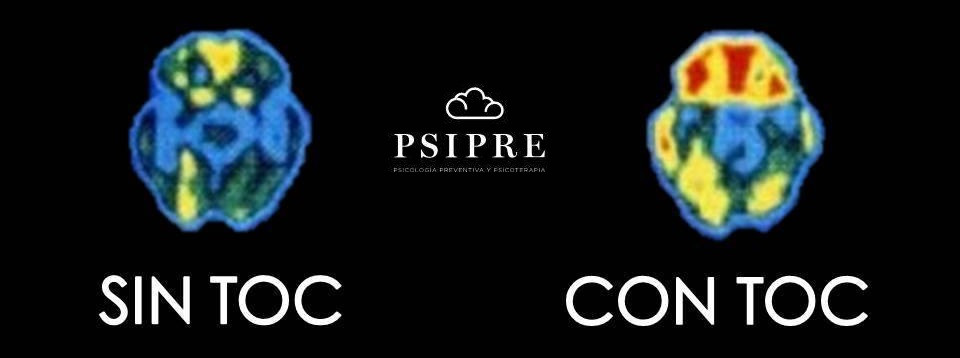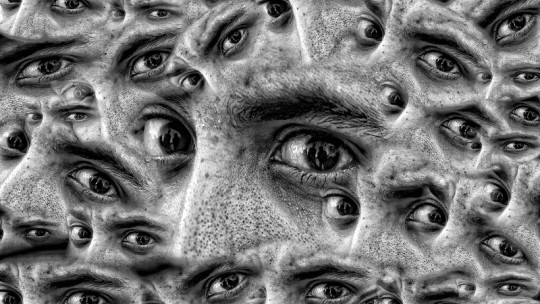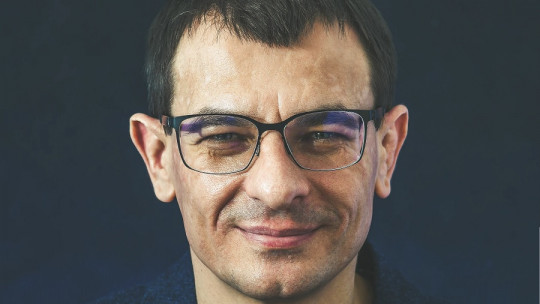Not all mental disorders are based on an abnormal perception of reality. Some, like the Obsessive-Compulsive Disorder (OCD) are not expressed through the way in which the information coming from the surrounding world is interpreted, but through actions that arise from the subject himself: the so-called repetitive behaviors either compulsions which undermine people’s quality of life by producing unpleasant sensations and limiting their degree of freedom.
However, talking about this type of behavior is telling only half of the story. The other half is found in intrusive thoughts, which are closely linked to compulsions. From a psychological perspective, it can be said that both intrusive thoughts (or obsessions) and compulsions are the two main gears through which Obsessive-Compulsive Disorder is articulated. But… how do these two pieces come to be activated?
Obsessive-Compulsive Disorder: intrusive thoughts and compulsions
Obsessive-Compulsive Disorder is usually considered, in many aspects, an alteration linked to the anxiety disorders and therefore it is characterized by being associated with a feeling of fear, anguish and continued stress in a magnitude that represents a problem for daily life and has a negative impact on the quality of life of the person in practically all areas in which This is developing.
In the specific case of Obsessive-Compulsive Disorder, the driving force behind these anxiety crises is obsession-compulsion cycle. Obsessions occur spontaneously, regardless of the person’s will, and become so frequent that they are invasive. These are mental images or recurring thoughts that disturb the person and that do not leave their head, causing them to desperately search for strategies to stop focusing their attention on that.
In addition to creating distress, these intrusive thoughts trigger a series of repetitive behaviors aimed at reducing the anxiety produced by obsessions: It’s about compulsions.
Compulsions are a type of rituals that must always be performed in the same way, and if not, the person begins the chain of actions that make them up again. It is very difficult to resist the urge to carry out these compulsions, and at the same time, the more they are carried out, the more one depends on them.
Thus, OCD is characterized as a disorder in which the symptoms of anxiety and depression combine. problems controlling one’s own impulses. Its two-phase structure makes the attempt to remedy the situation part of the problem, by providing temporary but effective relief to reinforce the association between obsession and compulsion and vice versa.

OCD is also characterized by repetitive behaviors
However, far from being useful, repetitive behaviors are actually compulsions, that is, stereotypical behaviors that are beyond the person’s control just like the thoughts whose negative effects they try to mitigate. That is why the diagnostic picture of Obsessive-Compulsive Disorder not only includes intrusive thoughts, but also the stereotyped actions that follow them.
By repeating themselves, both obsessions and compulsions come to take control of the person’s life, just as pathological gambling takes over the daily life of a gambler. The obsession-compulsion cycle causes anxiety to persist, since the person experiencing Obsessive-Compulsive Disorder anticipates the appearance of intrusive thoughts and stereotyped behaviors and knows that they are beyond their control. In this way, we enter a loop of action and reaction that is increasingly difficult to undo.
The most common compulsions in OCD
The compulsions associated with OCD cover a practically infinite and unfathomable range of possibilities. and its variety also grows as technological changes are introduced into our lives.
However, there are certain compulsions that are much more common than others. What are the most common behaviors among those who suffer from this disorder?
1. Need to clean
These compulsions are usually related to obsessions that have something to do with the idea of dirt or putrefaction, literal or metaphorical. People with these types of compulsions they may clean their hands too frequently or do the same with objects or other parts of the body. It’s all part of a desperate and urgent attempt to get rid of the dirt that invades what should be pure.
This is one of the most frequent variants of Obsessive-Compulsive Disorder, and can cause skin lesions due to erosion.
2. Need to order
For some reason, the person who has this type of Obsessive-Compulsive Disorder compulsion you have the impression that you need to sort several items either for the intrinsic value of being in a place with things well organized or to make a good impression. This type of compulsion has been linked to the classic Gestalt laws, since according to this psychological current we notice a feeling of tension or slight discomfort if what we perceive does not form a meaningful and well-defined set. In this sense, a messy environment would create discomfort by presenting difficulties in being perceived as a perfectly defined whole: a study room, a dining room, etc.
Thus, Obsessive-Compulsive Disorder would occur when this feeling of discomfort is amplified so much that it harms the person’s levels of well-being and quality of life, by forcing them to order so as not to feel bad.
3. Compulsions related to hoarding
In this type of Obsessive-Compulsive Disorder, the person has the need to save all types of elements taking into account their possible use in the future despite the fact that purely statistically it is highly unlikely that a situation will occur in which each of the things accumulated will be able to be used.
From some schools of psychodynamic currents, such as classical Freudian psychoanalysis, this tends to be related to Freud’s psychosexual theory. However, current clinical psychology is based on assumptions and a philosophy of research and intervention that have nothing to do with psychoanalysis.
4- Checking compulsions
Another typical example of Obsessive-Compulsive Disorder is that of a person who you need to constantly make sure everything is working as it should to the point of doing the same thing several times every day. This is a case of checking compulsion, based on the need to avoid future accidents and, more specifically, to make thoughts and imaginary scenes about accidents that could occur cease completely and stop causing discomfort. These thoughts appear involuntarily and lead to several checks aimed at reducing the risk of their occurrence, which in turn becomes a habit that is difficult to change.
Causes of Obsessive-Compulsive Disorder
As occurs in many psychiatric syndromes, Little is known about the precise biological mechanisms by which some people develop obsessive-compulsive disorder. It is not surprising because to address it, in addition to studying the complicated functioning of the human brain, it is necessary to address the context in which the person has developed, their habits and living conditions, etc. In short, OCD must be understood from a biopsychosocial perspective.
Manuals such as the DSM-IV describe the set of symptoms that characterize this anxiety disorder, but beyond the diagnostic criteria there is no theoretical model supported by a broad scientific consensus that explains its causes with a good level of detail. New research in neuroscience, together with the use of new technologies to study the functioning of the brain, will be decisive in finding out what the causes of OCD are.
The relationship between this psychological phenomenon and perfectionism
Many people assume that Obsessive-Compulsive Disorder has to do with perfectionism, since in compulsions a chain of steps is always strictly followed in the most meticulous way possible. However, everything seems to indicate that OCD is not as much related to this conscientiousness as it is to the lack of it. For example, although people with Obsessive-Compulsive Personality Disorder obtain very high scores in Conscientiousness (a trait of the Big Five model created by psychologists Paul Costa and Robert McCrae), Those with Obsessive-Compulsive Disorder tend to obtain very low scores in this trait.
This indicates that in OCD, there is an intention to pathologically compensate for the tendency to chaotic and spontaneous behavior that occurs in the rest of the aspects of life, that is, that one goes from exercising very little conscientiousness most of the time, to Obsess over it for a few minutes.
Relationship with Body Dysmorphic Disorder
Obsessive-Compulsive Disorder presents some symptomatic characteristics that overlap with those of Body Dysmorphic Disorder, a psychological alteration that is also based on perceptual rigidity and in which the person is very concerned that the aesthetics of their body do not deviate from very defined canons. For this reason, their comorbidity is high: where one is diagnosed, it is very possible that the other is also present.
If they occur at the same time, it is important to treat these two disorders as separate entities, since they affect different aspects of the patients’ lives and are also expressed through other situations.
Treatment of this psychopathology
The treatment of OCD combines resources from the field of psychiatry and psychological therapy. In the first of these forms of intervention, SSRI-type anxiolytics and antidepressants are mainly used and with regard to psychotherapy, forms of intervention such as systematic desensitization and controlled exposure are used, in which the person is trained to resist anxiety without reinforcing it through anxious thoughts and the performance of the compulsion.









